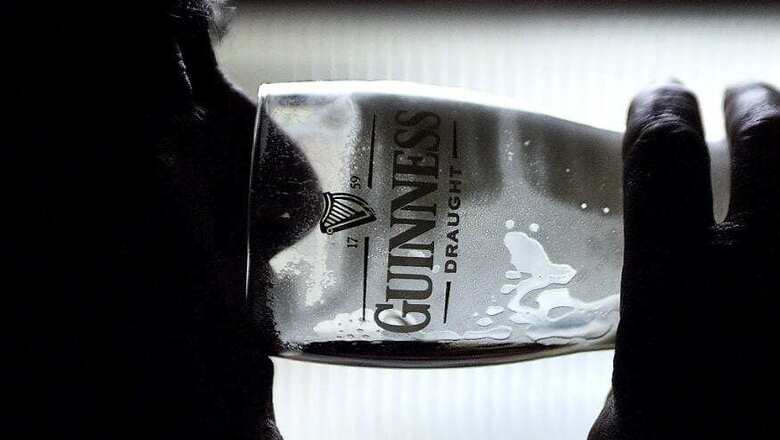
views
 Ever been to Dublin, Ireland? No? It is a must-visit place if there is a pub crawler in you. Whichever way you turn you meet pubs, pubs and more pubs. No wonder, James Joyce, the country’s most celebrated writer, once mused aloud whether there was any way to cross Dublin without passing a pub.
Ever been to Dublin, Ireland? No? It is a must-visit place if there is a pub crawler in you. Whichever way you turn you meet pubs, pubs and more pubs. No wonder, James Joyce, the country’s most celebrated writer, once mused aloud whether there was any way to cross Dublin without passing a pub.
People! They took his joke seriously and pored over the city map. The fever reached such a high pitch that a radio station announced rich prizes for those who offered a solution to the Joycean puzzle. Can you find a walking route that would take you from one side of the town to the other without passing a pub? For months, the main roads of Dublin became a happening ground for puzzle solvers.
Finally it needed a drunkard to solve the problem.
“When I come to a pub, I don’t pass it,” the solver said. “I stop for a pint, and then carry on.”
Such joviality is infectious especially in a town where Guinness makes its home. Yeah, we are talking about the renowned black beer made from roasted malted barley — the famous “good for you” Guinness beer, as the advertisement says, the pride of Ireland.
Arthur Guinness, the father figure, began brewing the beer in the 18th century. Beer was considered a safe haven during the time when the rest of the country was reeling under the gin craze.
Guinness strummed the nationalist sentiments into a perfect crescendo by adopting the Irish harp as its logo. (But in the 1980s when the IRA bombing spree came home to England, Guinness thought hard about scrapping the harp logo in fear of Englishmen connecting the musical instrument with Nero of Rome).
So the next time you go to Ireland, don’t forget to visit the Guinness Storehouse, Dublin’s most famous tourist attraction which is now a Guinness museum. Your Ireland experience will be complete only when you idle away your time inside a pub with a glass of Guinness on your table.
Now hold that glass of beer with your hands. Guinness is black, so beautifully black. But the company says it turns ruby the moment you hold the glass against the light. Fine.
Why this hullabulloo about Guinness!
With just a few more than a dozen to choose from, most of us Indians are yet to appreciate the beauty of the black beer.
Let us hear out the Guinness story.
When Arthur Guinness purchased Dublin’s St. James Gate brewery in 1759, few people knew it was going to flag off a new culture. He struck a wonderful deal with the city council which wanted him to pay a meagre 45 pounds a year. A bonanza indeed, but the cherry on the top was that the lease was for 9,000 years. 10,759 AD to be exact.
And people in my state, Kerala, are blaming our authorities for signing that 99-year-old lease on Mullapperiyar dam with Tamil Nadu!
Arthur initially produced ale (a variety of beer), but seeing the success of English porter beer (a dark style of beer) imported to the country from England, he switched over to the dark drop on 1799.
He reversed the beer trade for the first time with that one decision — beer began flowing back from Ireland to England.
Guinness is now brewed in 51 countries and distributed in additional 100 countries. Around 10 million glasses are savoured everyday around the world. Sadly most our glasses are spared, as our foreign liquor shops fall outside the sweet black shade of the liquid manna. (Diego India has been mulling over the introduction of the dark stout to India for the last six years).
Guinness is often called ‘a meal in a glass’ even though it has very low calories. Put it against your lips to feel its rich and creamy tang. Guinness reminds you of coffee and chocolate. The creamy smoothness comes from Nitrogen.
Nitrogen?
While ordinary beer comes with 100% carbon dioxide, a bottle of Guinness is stuffed with Nitrogen up to 75%.
Pour it into a glass; Guinness is slower. A glass of the black potion remains unfilled until foamy head peeks over “with beaded bubbles winking over the brim”.
Guinness is not only refreshing but also intelligent, going by its marketing strategies. Whenever Guinness feared its sale slackening, it hit back with an ad campaign which had the power to rewrite the future of not only the beer industry, but also the advertisement industry. Don’t forget to watch a few of them on YouTube.
In Ireland, you get a pint of Guinness after delivery and after you donate blood. Come to India you get biscuit and tea. If you are lucky you get Frooty.
(Manu Remakant is a freelance writer who also runs a video blog - A Cup of Kavitha - introducing world poetry to Malayalees. Views expressed here are personal)




















Comments
0 comment